AUCTORES
Globalize your Research
Research Article
*Corresponding Author: Tiffany W. Ardley. College of Pharmacy and Pharmaceutical Sciences, Institute of Public Health, Florida A&M University, Tallahassee, FL 32307, USA.
Citation: Shasline Gedeon, Aisha Montgomery, Madhavi Gangapuram, Kinfe K. Redda, Tiffany W. Ardley. (2023). The Chemistry and Pharmacology of Tetrahydropyridines: Part 2, J. Clinical Medical Reviews and Reports, 5(1) DOI: 10.31579/2690-8794/135
Copyright: © 2023 Tiffany W. Ardley. This is an open-access article distributed under the terms of The Creative Commons Attribution License, which permits unrestricted use, distribution, and reproduction in any medium, provided the original author and source are credited.
Received: 28 November 2022 | Accepted: 06 December 2022 | Published: 20 March 2023
Keywords: tetrahydropyridines; synthesis; pharmacology; structure-activity relationship; cancer
Tetrahydropyridines (THPs) have sparked notable interest as an auspicious heterocyclic moiety. Existing in distinct structural isomers including 1,2,3,4-tetrahydropyridine, 1,2,3,6-tetrahydropyridine, 2,3,4,5-tetrahydropyridine, its presence has been identified in both natural products and synthetic pharmaceutical agents. Many THP-containing compounds have been synthesized by the inspiration of known bioactive natural products and have been found to possess biologically active properties. For this reason, more innovative methods have been developed for the synthesis of substituted-tetrahydropyridine derivatives and their pharmacological activities have been determined. This review article is written to provide an overview which is a continuation of the former article by Redda et al. entitled, “The Chemistry and Pharmacology of Tetrahydropyridines”. This review aims to highlight the research progress accomplished thus far and to increase the database for structure activity relationship (SAR) studies. Special attention is given to the introduction of varied substituents onto the THP ring system and its redolent effect on their pharmacological properties, specifically as anti-inflammatory and anticancer agents. Thus, the use of SAR studies of newly reported THP derivatives will help shed light on the significance of utilizing THP-containing motifs as lead compounds in drug discovery and design.
BBB blood-brain barrier
Boc tert-Butyloxycarbonyl
CN nitrile
COX-2 cyclooxygenase 2
DMF Dimethylformamide
ee% percent enantiomeric excess
ERa estrogen receptor
ERK extracellular signal-regulated kinase
Et ethyl
EtOH ethanol
Et3N Triethylamine
FDA Food and Drug Association
HIV human immunodeficiency virus
IC50 Inhibitory Concentration of 50%
ID50 Infectious Dose to 50 Percent of Exposed Individuals
IL interleukin
L-NIL l-N6-(1-imino-ethyl)-lysine
LPS Lipopolysaccharide
MAO monoamine oxidase
MAO-B monoamine oxidase B
MAPK mitogen-activated protein kinase
Me methyl
MeOH methanol
Mol molar
MPP+ 1-methyl-4-phenyl pyridinium
MPTP 1-methyl-4-phenyl-1,2,3,6-tetrahydropyridine)
MSH mesitylenesulfonyl hydroxymate
n-Bu Normal butyl
NO2 Nitrogen dioxide
NS-SSA nano-sphere silica sulfuric acid
OEt ethoxy
OMe methoxy
PBBS Poly N, N′-dibromo-N-ethyl-benzene-1,3-disulfonamide
Ph phenyl
Raf-1 rapidly accelerated fibrosarcoma
Rt Room temperature
SAR Structure-activity relationship
SSRIs selective serotonin reuptake inhibitors
TBBDA N, N, N′,N′-tetrabromobenzene-1,3-disulfonamide
t-Bu Tert-butyl
THF tetrahydrofuran
THP Tetrahydropyridine
TNFa tumor necrosis factor- (α)
Ts tosyl
mM Micromolar
Tetrahydropyridine (THP) is a very fascinating nitrogen-containing heterocyclic moiety that has become of great interest in the medicinal and drug discovery space. This structural motif presences itself in distinct structural isomers including 1,2,3,4-tetrahydropyridine, 1,2,3,6-tetrahydropyridine, 2,3,4,5-tetrahydropyridine [1] and has been observed in both natural products and synthetic pharmaceutical agents. Betanin 1 is a natural THP-containing compound found in beets used in the food industry as a food colorant [2]. THPs have also been discovered in various alkaloids including 6-[(E)-2-(3-methoxyphenyl) ethenyl]-2,3,4,5-tetrahydropyridine 2 of Lobelia siphilitica [3] and Koreenceine B 3 in P. koreensis [4], as seen in Figure 1.
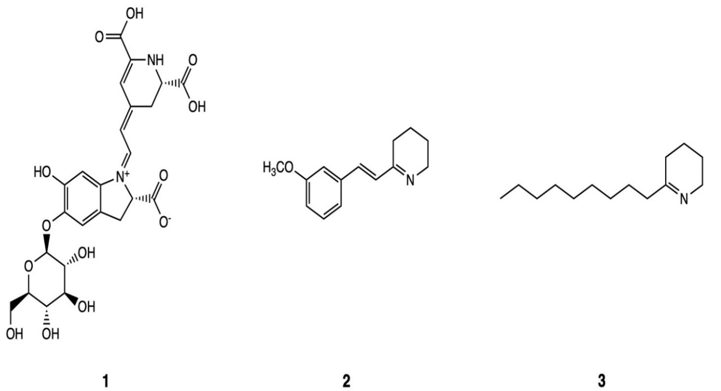
Figure 1: Tetrahydropyridines in nature and in alkaloids.
Additionally, many THP-containing compounds have been synthesized by the inspiration of known bioactive natural products and have been found to possess biologically active properties ranging from anti-inflammatory [5], antioxidant [6], antimicrobial [7], anticancer [8], and antifungal [9], just to name a few. There are numerous THP derivatives with a vast degree of pharmacological properties and that is greatly due to the substituents on the THP ring system. Being non-planar rings with sp3 carbon atoms, THPs are often found to be chiral molecules and in such circumstances, absolute and relative configuration of the substituents would also be pivotal in rendering biological properties [10].
Since the discovery of MPTP (1-methyl-4-phenyl-1,2,3,6-tetrahydropyridine) 4, a compound that produces a neurotoxic metabolite responsible for irreparable Parkinsonism in humans [11], there arose interest in studying the synthesis and biological function of tetrahydropyridines. MPTP was discovered in 1982, after some people injected themselves with a substance, which at the time was known as a novel synthetic heroin. They soon developed irreversible Parkinsonism. Research studies deduced the proposed mechanism of action of MPTP to be that the powerful neurotoxic prodrug travels through the blood-brain barrier (BBB) to the substantia nigra to selectively target dopaminergic neurons, replicating the motor symptoms associated with Parkinson’s Disease [12]. Upon crossing the BBB, the monoamine oxidase B (MAO-B) enzyme metabolizes MPTP by complete oxidation to yield its toxic metabolite, the 1-methyl-4-phenyl pyridinium ion (MPP+) 5 as seen in Figure 2.

Figure 2: Oxidation of 1-methyl-4-phenyl-1,2,3,6-tetrahydropyridine (MPTP) into 1-methyl-4-phenyl pyridinium ion (MPP+) by the enzyme, monoamine oxidase B
Permission from: [11]; He, X. J., & Nakayama, H. (2009). Neurogenesis in Neurotoxin-induced Animal Models for Parkinson’s Disease—A Review of the Current Status. Journal of Toxicologic Pathology, 22(2), 101–108. https://doi.org/10.1293/tox.22.101 Copyright 2009 The Japanese Society of Toxicologic Pathology, Creative Commons Attribution Non-Commercial No Derivatives (by-nc-nd) License.
To date, neuroprotection research has sprout through novel synthesis of MAO-inhibitory THP-derivatives and various animal model studies, including mice, primate, zebrafish, and salamander models [13]. Tetrahydropyridines are now being studied in a much larger scope and many of their biological properties have been uncovered.
Many innovative methods for the synthesis of substituted THP-derivatives have been reported. This section serves to review some of the recent developments in substituted-THP synthesis.
One-pot Synthesis
One-pot synthesis of THP derivatives has been reported as a strategy aimed to increase efficiency of a one-reactor chemical reaction. Barber et al. described a synthetic method of using a one-pot nitro-Mannich/hydroamination cascade. The first step involved an asymmetric nitro-Mannich reaction using a bifunctional organocatalyst. Then, a subsequent gold-catalyzed alkyne hydroamination, protometalation, and finally isomerization, was used to generate highly enantioselective and diastereoselective THP derivatives [14] (6a-j). All products were obtained in moderate to good yields ranging from 31-72%.
Amines containing either electron-donating or electron-withdrawing groups, aromatic aldehydes, and 1,3-dicarbonyl compounds were utilized by Ramin et al. in the presence of poly (N, N′-dibromo-N-ethyl-benzene-1,3-disulfonamide) (PBBS) and N, N, N′,N′-tetrabromobenzene-1,3-disulfonamide (TBBDA) as a catalytic source [15] in ethanol at room temperature. This reaction afforded highly substituted THP analogs (7a-l) in 54-81% yield and high purity. Another highly efficient approach for synthesizing novel THP derivatives come from employment of solid-supported catalysts, more specifically nano-sphere silica sulfuric acid (NS-SSA) [16]. According to Deraei et al., anilines, β-ketoesters, and arylaldehydes with electron-withdrawing substituents react with the NS-SSA catalyst in acetonitrile to produce substituted 1,2,3,4-THP analogs with high to excellent yields of 74-92%. Efficiency increased as Balijapalli et al. reported synthesis of THPs using metal-free catalyst reaction conditions through a tandem reaction [17]. Anilines, arylaldehydes, and β-ketoesters react with acetic acid which functions as both the solvent and the catalyst in the reaction. THP derivatives were generated in high yields of 70-96%; among them are compounds (8a-j) as seen in Figure 3.
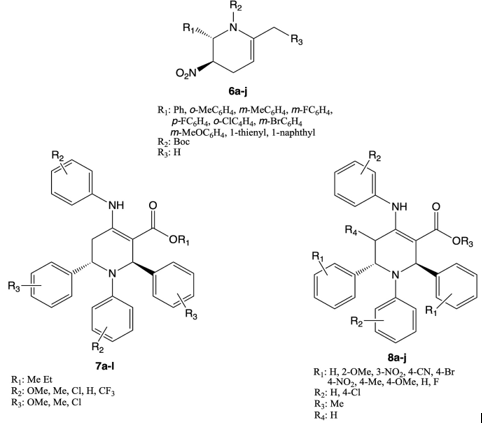
Figure 3: THPs synthesized by way of one-pot synthesis methods.
Cyclization Reactions
α,β-unsaturated imines and alkynes can be used to produce a resourceful reaction cascade piloting the development of highly substituted 1,2,3,6-tetrahydropyridines [18]. The rhodium(I) catalyst triggers a coupling reaction through the C–H activation of the alkyne. Electrocyclization via resonance stabilization occurs and is followed by reduction through acid/borohydride stimulation. The desired compounds are afforded in high diastereoselectivitiy (>95%) and yields (47-95%).
From experience through previous research in phosphine-catalyzed annulation reactions, Wang et al. reported an innovative approach employing phosphine-derivative catalysis on 1-azadienes and ɑ-substituted allene ketones to produce tetrahydropyridines [19]. The reactants undergo a [4+2]-annulation reaction to produce enantioselective target compounds (12a-j) in 46-70% yields and >97 ee% (percent enantiomeric excess) as seen in Figure 4.

Figure 4: A phosphine-catalyzed enantioselective [4 + 2]-annulation reaction between allene ketones and 1-azadienes to produce THP derivatives
Reprinted (adapted) with permission from Wang, Z., Xu, H., Su, Q., Hu, P., Shao, P.-L., et al. (2017). Enantioselective Synthesis of Tetrahydropyridines/Piperidines via Stepwise [4 + 2]/[2 + 2] Cyclizations. Organic Letters, 19(12), 3111–3114. https://doi.org/10.1021/acs.orglett.7b01221. Copyright 2017 American Chemical Society.
Palladium-catalyzed cyclization-Heck reaction can also be used to synthesize THP analogs [20]. Yan et al. recounts the formation of 3-methylene-5-phenyl-1,2,3,4-tetrahydropyridine derivatives by palladium-catalyzed cyclization-Heck reaction of allenamides and aryl halides in dioxane at 80ºC. The reactants produced moderate to good yields between 54-88%.
The pyridine ring systems, including its partially and completely reduced ring derivatives, have made an undeniable appearance in natural products and synthetic compounds. Tetrahydropyridines bear pharmacological properties which have been reported in multifaceted scopes. THPs have been reported as dopamine-2 receptor agonists, for example, Droperidol which is used in sedation and antipsychotic, antiemetic, and migraine remedy [21-22]. THP derivatives have also been recounted for possessing antioxidant [23], antimicrobial [24], antibacterial [25], anticancer [26-27], and anti-inflammatory properties [28-29]; they exist as selective serotonin reuptake inhibitors (SSRIs) [30], acetyl cholinesterase inhibitors [31], and human immunodeficiency virus (HIV) protease inhibitors [32]. While this section serves to provide a brief overview of the pharmacological potential of THPs, Mohsin et al. provides an extensive account of the various pharmacological/biological properties related to THP derivatives [33].
Chronic inflammation of the body is a definitive cause of recurrent tissue destruction often leading to inflammation-based diseases and ailments, like osteoarthritis, rheumatoid arthritis, and even cancer. There have been great strides in the ongoing investigation into the plausibility of utilizing tetrahydropyridines as potential anti-inflammatory agents. Nakao et al. conducted research employing THP derivatives for the synthesis of proinflammatory cytokine TNF
Inflammation has notably been linked to cancer. As tetrahydropyridines have been incorporated into drug design as anti-inflammatory agents, ongoing investigation of THPs as anticancer agents have sprouted. Vinblastine is a THP-containing, FDA-approved chemotherapeutic drug. It is used in the treatment of Hodgkin’s lymphoma, non-Hodgkin’s lymphoma, breast, testicular, non-small cell lung cancer, and various other cancers [37-38]. There are very few THP-containing anticancer agents and so the search continues for more effective treatment with decreased toxic profiles and side effects. Kurtanović et al. designed and synthesized compounds as ER
The study of tetrahydropyridines has been a major focus in our laboratory research for many decades. As previously stated, the pharmacological properties of the THP analogs are dependent on the substituents of the THP ring. More THP derivatives have been published since the last reported in efforts to expand the database for SAR studies. Here, we present the compounds containing tetrahydropyridine ring systems that have been synthesized in our laboratories, analyzed for their pharmaceutical capabilities and medicinal applications, and reported as potential anti-inflammatory and anticancer agents.
Two reaction schemes have been documented and employed as a simple method for the synthesis of substituted N-(carbonylamino)-1,2,3,6-tetrahydropyridines. Redda et al. [1] describes Figure 7 beginning with 1-chloro-2,4-dinitrobenzene and substituted pyridines refluxed in acetone. Nucleophilic aromatic substitution takes place and a 2,4-dinitrophenyl-substituted pyridinium chloride is awarded. The substituted-pyridinium chloride salt then reacted with either a benzoyl/pyridyl carbonyl or sulfonyl hydrazide in the presence of methanol and excess triethylamine at room temperature. Reflux with a p-dioxane/water mixture (4:1) promoted hydrolysis and rendered pyridinium ylides. Reduction of the ylides using sodium borohydride generated its corresponding tetrahydropyridine products. Figure 8 began with a sulfonation reaction of mesitylenesulfonyl chloride and ethylacetohydroxymate in dimethyl formamide and triethylamine that gave ethyl-O-(mesitylenesulfonyl)-acetohydroxymate. Following hydrolysis of 26 using a p-dioxane/water (4:1) mixture in 70% perchloric acid, mesitylenesulfonyl hydroxymate (MSH) formed. MSH, the aminating agent, reacted with the substituted pyridines to produce N-amino-pyridinium mesitylenesulfonate. The pyridinium salt then underwent acylation with substituted acyl chlorides in tetrahydrofuran, followed by quenching using saturated sodium bicarbonate solution to generate the ylides. The reduction of the ylides using sodium borohydride yielded its corresponding tetrahydropyridine products.
Using these synthetic methods, a plethora of novel THP derivatives have been successfully synthesized and reported. Gangapuram and Redda gave an account for the synthesis of 1-(substituted phenylcarbonyl/sulfonylamino)-1,2,3,6-tetrahydropyridine-5-carboxylic acid diethylamides [42] as potential anti-inflammatory agents, seen in Table 1.


Table 1: Substituents of synthesized 1-(Substituted Phenylcarbonyl/sulfonylamino)-1,2,3,6-tetrahydropyridine-5-carboxylic acid diethylamides with percent yields.
Compounds 29a-k were synthesized using Figure 7 and compounds 29l-o were synthesized using Figure 8.

Figure 7: Synthesis of carbonyl/sulfonylaminotetrahydropyridines using 1-chloro-2,4-dinitrobenzene. R= substituted pyridines R1: substituents of substituted carbonyl/sulfonyl hydrazides
Reprinted (adapted) with permission from Henderson, E. D., Gangapuram, M., Eyunni, S. K. V., Redda, K. K., & Wilson-Ardley, T. (2019). Design, Synthesis and Evaluation of Novel N-Substituted-[Benzoylamino]-5-Ethyl-1,2,3,6-Tetrahydropyridines as Potential Anti-Cancer Agents. Madridge Journal of Pharmaceutical Research, 3(1), 52–59. https://doi.org/10.18689/mjpr-1000109 ; Copyright: 2019 This work is licensed under a Creative Commons Attribution 4.0 International License.

Figure 8: Synthesis of carbonylaminotetrahydropyridines using a mesylate salt. R= substituted pyridines R1: substituents of substituted acyl chlorides
Reprinted (adapted) with permission from Henderson, E. D., Gangapuram, M., Eyunni, S. K. V., Redda, K. K., & Wilson-Ardley, T. (2019). Design, Synthesis and Evaluation of Novel N-Substituted-[Benzoylamino]-5-Ethyl-1,2,3,6-Tetrahydropyridines as Potential Anti-Cancer Agents. Madridge Journal of Pharmaceutical Research, 3(1), 52–59. https://doi.org/10.18689/mjpr-1000109 ; Copyright: 2019 This work is licensed under a Creative Commons Attribution 4.0 International License.
N,N-Diethylnicotinamide was utilized as the substituted pyridine. Substituents from the substituted acyl chlorides are listed under the “R” group and the use of carbonyl/sulfonyl groups are listed as “X” within the table. These THP derivatives were successfully synthesized in low-to-moderate yields ranging 30.8-58.0%.
Later, Mochona and Redda successfully synthesized more novel N-benzoylamino-1,2,3,6-tetrahydropyridine derivatives [43] as potential anti-inflammatory agents, exhibited in Table 2. The THP derivatives shown were synthesized using Figure 8. Substituents from the array of substituted pyridines and substituted acyl chlorides are listed in Table 2 as R1 and R2, respectively. The newly reported THP derivatives 30a-q were synthesized in moderate-to-good yields ranging 42-74%.
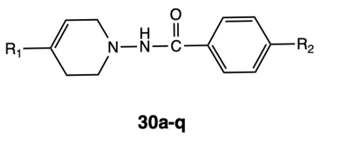
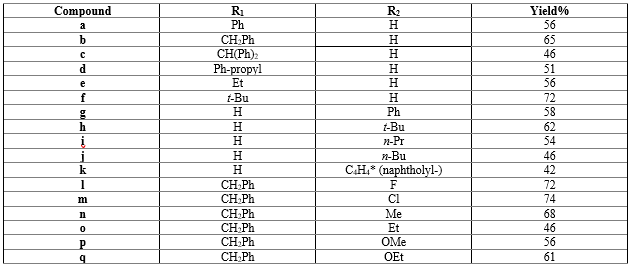
Table 2: Substituents of synthesized N-Benzoylamino-1,2,3,6-tetrahydropyridine with percent yields
Similarly, Ghaffari et al. provided additional N-substituted carbonyl/sulfonylamino-1,2,3,6-tetrahydropyridines to include into the THP-derivative database [44]. Table 3 provides an outlook on those reported analogs. Figures 7 and 8 were utilized for the synthesis of these analogs. R1 specifies substituents from the substituted pyridines, R2 provides substituents from substituted acyl chlorides, and X gives carbonyl/sulfonyl addition. These THP analogs 23a-k were synthesized in fair-to-very good yields ranging from 25-83%.


Table3: Substituents of synthesized N-Substituted Carbonylamino-1,2,3,6-Tetrahydropyridines with percent yields.
Twelve substituted N- [3-(1H- pyrrol-1-yl) methyl]-1,2,5,6-tetrahydropyridin-1-yl] benzamide/benzene sulfonamides were synthesized by Gangapuram et al. and evaluated for in vitro anti-inflammatory activity in murine BV-2 microglial cells. Structural modifications included a carbonyl or sulfonyl “X” group and an “R” group containing substituents with various degrees of electronic properties as seen in Table 4.
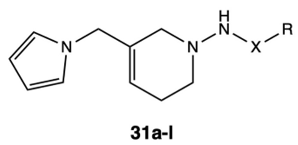

Table 4: Substituents and anti-inflammatory evaluations of synthesized substituted N- [3-(1H- Pyrrol-1-yl) methyl]-1,2,5,6-tetrahydropyridin-1-yl] benzamide/ benzene Sulfonamides
The THP derivatives were examined for nitric oxide inhibition in the lipopolysaccharide-treated microglial cells using dexamethasone and L-NIL (selective nitric oxide synthase inhibitor) as controls [45]. The most potent compound, 31a, was also assessed for interleukin (IL)-1
In 2013, Florida A&M University Board of Trustees published a patent for N-aminopyrrolylmethyltetrahydropyridines means as anti-cancer agents. Redda and Gangapuram synthesized and investigated the anticancer properties of three N-aminopyrrolylmethyl-tetrahydropyridine compounds. They worked together making various modifications to the phenyl ring and a sulfonyl “X” group of their lead compound. The introduction of disparate functional groups possessing copious degrees of electronic properties led to the design of these three novel derivatives 32a-c. Following successful synthesis of these THP derivatives, they were then evaluated for their antiproliferative activity against cancer cells, specifically breast cancer cells. Antiproliferative studies were arranged against MCF-7 estrogen receptor-positive breast cancer cells, MDA-MB-231 estrogen receptor-negative breast cancer cells, and Ishikawa endometrial cancer cells. In turn, these compounds were found to be effective in inhibiting proliferative activity of the tested cancer cell lines. Cytotoxicity studies uncovered IC50 values significantly less than that of tamoxifen as seen in Table 5, warranting U.S. patent publication US8476303B2 [46].
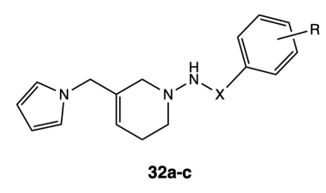

Table5: Substituents and antiproliferative data on synthesized N-Aminopyrrolylmethyltetrahydropyridines
N-Substituted-(Benzoylamino)-5-Ethyl-1,2,3,6-Tetrahydropyridines Tested for Anticancer Properties
Henderson et al. synthesized four novel N-substituted-(benzoylamino)-5-ethyl-1,2,3,6-tetrahydropyridines which were also evaluated for their anticancer properties [47]. Structural modifications included a 5-ethyl substituent on the pyridine ring and electronically diverse substituents on the phenyl ring as seen in Table 6.
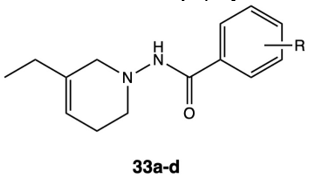

Table 6: Substituents and antiproliferative data on synthesized N-Substituted- [Benzoylamino]-5-Ethyl-1,2,3,6-Tetrahydropyridines
These THP analogs were assessed for their antiproliferative properties against MCF-7 and MDA-MB-231 breast cancer cells and Ishikawa endometrial cancer cells. Studies disclosed some anticancer activity though no compound performed better than controls Tamoxifen and 4-Hydroxytamoxifen.
In continuation of this same study, Henderson et al. synthesized N-(4-iotobenzoylamino)-5-ethyl-1,2,3,6-tetrahydropyridine as a treatment for cancer. This compound was synthesized and evaluated for its anticancer properties. Structural modification included a 4-Iodo substitution on the phenyl ring as seen in Table 7.


Table 7: Substituent information and antiproliferative data on synthesized N-(4-iodobenzoylamino)-5-Ethyl-1,2,3,6-Tetrahydropyridine
Cell viability studies were performed on this compound against the MCF-7 and MDA-MB-231 breast cancer cell lines and the Ishikawa endometrial cancer cell line to assess potential antiproliferative activity of the THP. Compound 33e displayed encouraging results as it performed better than tamoxifen and for hydroxy tamoxifen. Compound 33e produced IC50 values of 2.932, 1.25, and 5.97 for cell lines Ishikawa, MCF-7, and MDA-MB-231 respectively. Patent US20200101052A1 was published by Florida A&M University [48] in 2020
In short, a brief overview was given on chemical and pharmacological updates pertaining to the THP moiety. In the realm of organic chemistry, two synthetic methods have been established in our lab for the synthesis of substituted THP derivatives. One method involves the synthesis of THPs using 1-chloro-2,4-dinitrobenzene which can react with various substituted pyridines and thereafter, with substituted carbonyl or sulfonyl hydrazides. The alternative method affords THP derivatives by first synthesizing a mesylate salt to then undergo amination with substituted pyridines. These two synthetic schemes demonstrate facile approaches for THP synthesis.
Many studies have been performed over the years to increase the SAR data bank for substituted THP derivatives. THP derivatives have been synthesized and tested for potential biological activity as anti-inflammatory agents and anticancer agents. As anti-inflammatory agents, these studies have shown that THP derivatives may possess some level of anti-inflammatory properties. Other studies presented THP-containing compounds examined as anti-cancer agents. There appears to be great potential shown in this area as there has been patents filed on such THP derivatives showing their potential anti-proliferative properties compared to tamoxifen and 4-hydroxytamoxifen. In both areas of focus, the data supports the claim that biological properties may be dependent on the substitutions made on the THP ring system.
Future direction requires additional research to continue building and increasing the structural database of substituted THPs. Qualitative structure-activity relationship studies can be further utilized to discover how certain functional modifications correspond to pharmacological activity. Rational-backed structural modification will subsequently furnish more efficacious compounds with decreased toxicity and side effects.
Tetrahydropyridines have become more present in the drug design stage of creating pharmacologically active molecules. THPs possess marking influence in rational-based drug discovery methods; they’ve radicalized both structural and ligand-based drug design strategies being that they exist as essential substituents of lead compounds and as focal structural bases for drug analogs. The presence of substituted THP moieties have been observed in numerous biologically active compounds and yet, the surface is barely scratched. Research studies convey the significance that substituents have on the THP ring system and how they affect the pharmacological characteristics of the THP-containing molecules. Many substituted THP derivatives exhibit biological activity including muscle relaxant, antibacterial, antifungal, sedative, anti-inflammatory, and anticancer. For this reason, further exploration is necessary to uncover the maximum benefits of utilizing THPs in drug discovery.
Throughout the stages of a typical inflammatory response, vascular inflammation occurs through the presence of stimulatory agents and pro-inflammatory mediators. An immune response transpires; endothelial cells recruit neutrophils and while blood cells to the injury site. Tissue damage is present and the body’s macrophages and other local mediators work to restore damage done. Finally, tissue repair allows for new blood vessel formation wound healing, debris cleanup, and scar formation [49-50]. Dysregulation throughout any part of the process can lead to issues like excessive scarring or even chronic inflammation. Examination of how chronic inflammation is associated with cancer can help steer us to superior treatment options. Recent advances have been made in exploring THP derivatives as potential anti-inflammatory and anticancer agents. This review paper serves to record the advancements produced over decades of research.
Future and ongoing studies aim to focus on THP derivatives as potential anticancer agents. There are numerous routes that can be taken to accomplish this task but because THPs have been reported to possess anti-inflammatory properties and because there is a direct correlation between chronic inflammation and cancer, there exists the hypothesis that these THPs analogues may serve as potential anti-cancer agents via drug targeting within the inflammation pathway process. Drug targets are being identified through research of the anti-inflammatory pathways as well as inflammation response mechanisms. Currently, the arachidonic acid pathway is under investigation for potential drug targets. Careful examination of the cyclooxygenase enzyme deems it a plausible drug target as literature has disclosed its role in the overproduction of harmful prostaglandin products overexpressed in both inflammation and cancer. Similarly, investigation of COX-2 has revealed its participation in tumorigenesis.
These recent discoveries are very practical for the development of powerful cancer treatment options but there is still more work to be done. The research studies presented thus far have mainly focused on breast cancer. However, this concept can be extended to other cancer types. Inflammation is not discriminatory against any specific type of cancer. In fact, inflammation is present in all different forms of cancer and so this research will benefit the advancement of therapeutic agents for the treatment of all cancers. Moreover, chronic proliferation is a rudimentary trait of cancer cells which highlights the importance of the antiproliferative studies performed. Additional studies on other biological properties of future THP derivatives can be accomplished to widen the potential therapeutic scope of the compounds. With many accessible angles left to explore, continued studies on THPs are essential to unearth their greatest potential.
This research was also made possible by Grant Numbers U54CA233396, U54CA233444, & U54CA233465 from the National Institutes of Health (NIH), National Cancer Institute (NCI). Its contents are solely the responsibility of the authors and do not necessarily represent the official views of the NCI. This research was also supported by the National Institute on Minority Health and Health Disparities of the National Institutes of Health under the RCMI Award Number U54 MD007582. The content is solely the responsibility of the authors and does not necessarily represent the official views of the NIH.
The authors declare no economic interest or conflict of interest
Clearly Auctoresonline and particularly Psychology and Mental Health Care Journal is dedicated to improving health care services for individuals and populations. The editorial boards' ability to efficiently recognize and share the global importance of health literacy with a variety of stakeholders. Auctoresonline publishing platform can be used to facilitate of optimal client-based services and should be added to health care professionals' repertoire of evidence-based health care resources.

Journal of Clinical Cardiology and Cardiovascular Intervention The submission and review process was adequate. However I think that the publication total value should have been enlightened in early fases. Thank you for all.

Journal of Women Health Care and Issues By the present mail, I want to say thank to you and tour colleagues for facilitating my published article. Specially thank you for the peer review process, support from the editorial office. I appreciate positively the quality of your journal.
Journal of Clinical Research and Reports I would be very delighted to submit my testimonial regarding the reviewer board and the editorial office. The reviewer board were accurate and helpful regarding any modifications for my manuscript. And the editorial office were very helpful and supportive in contacting and monitoring with any update and offering help. It was my pleasure to contribute with your promising Journal and I am looking forward for more collaboration.

We would like to thank the Journal of Thoracic Disease and Cardiothoracic Surgery because of the services they provided us for our articles. The peer-review process was done in a very excellent time manner, and the opinions of the reviewers helped us to improve our manuscript further. The editorial office had an outstanding correspondence with us and guided us in many ways. During a hard time of the pandemic that is affecting every one of us tremendously, the editorial office helped us make everything easier for publishing scientific work. Hope for a more scientific relationship with your Journal.

The peer-review process which consisted high quality queries on the paper. I did answer six reviewers’ questions and comments before the paper was accepted. The support from the editorial office is excellent.

Journal of Neuroscience and Neurological Surgery. I had the experience of publishing a research article recently. The whole process was simple from submission to publication. The reviewers made specific and valuable recommendations and corrections that improved the quality of my publication. I strongly recommend this Journal.

Dr. Katarzyna Byczkowska My testimonial covering: "The peer review process is quick and effective. The support from the editorial office is very professional and friendly. Quality of the Clinical Cardiology and Cardiovascular Interventions is scientific and publishes ground-breaking research on cardiology that is useful for other professionals in the field.

Thank you most sincerely, with regard to the support you have given in relation to the reviewing process and the processing of my article entitled "Large Cell Neuroendocrine Carcinoma of The Prostate Gland: A Review and Update" for publication in your esteemed Journal, Journal of Cancer Research and Cellular Therapeutics". The editorial team has been very supportive.

Testimony of Journal of Clinical Otorhinolaryngology: work with your Reviews has been a educational and constructive experience. The editorial office were very helpful and supportive. It was a pleasure to contribute to your Journal.

Dr. Bernard Terkimbi Utoo, I am happy to publish my scientific work in Journal of Women Health Care and Issues (JWHCI). The manuscript submission was seamless and peer review process was top notch. I was amazed that 4 reviewers worked on the manuscript which made it a highly technical, standard and excellent quality paper. I appreciate the format and consideration for the APC as well as the speed of publication. It is my pleasure to continue with this scientific relationship with the esteem JWHCI.

This is an acknowledgment for peer reviewers, editorial board of Journal of Clinical Research and Reports. They show a lot of consideration for us as publishers for our research article “Evaluation of the different factors associated with side effects of COVID-19 vaccination on medical students, Mutah university, Al-Karak, Jordan”, in a very professional and easy way. This journal is one of outstanding medical journal.
Dear Hao Jiang, to Journal of Nutrition and Food Processing We greatly appreciate the efficient, professional and rapid processing of our paper by your team. If there is anything else we should do, please do not hesitate to let us know. On behalf of my co-authors, we would like to express our great appreciation to editor and reviewers.

As an author who has recently published in the journal "Brain and Neurological Disorders". I am delighted to provide a testimonial on the peer review process, editorial office support, and the overall quality of the journal. The peer review process at Brain and Neurological Disorders is rigorous and meticulous, ensuring that only high-quality, evidence-based research is published. The reviewers are experts in their fields, and their comments and suggestions were constructive and helped improve the quality of my manuscript. The review process was timely and efficient, with clear communication from the editorial office at each stage. The support from the editorial office was exceptional throughout the entire process. The editorial staff was responsive, professional, and always willing to help. They provided valuable guidance on formatting, structure, and ethical considerations, making the submission process seamless. Moreover, they kept me informed about the status of my manuscript and provided timely updates, which made the process less stressful. The journal Brain and Neurological Disorders is of the highest quality, with a strong focus on publishing cutting-edge research in the field of neurology. The articles published in this journal are well-researched, rigorously peer-reviewed, and written by experts in the field. The journal maintains high standards, ensuring that readers are provided with the most up-to-date and reliable information on brain and neurological disorders. In conclusion, I had a wonderful experience publishing in Brain and Neurological Disorders. The peer review process was thorough, the editorial office provided exceptional support, and the journal's quality is second to none. I would highly recommend this journal to any researcher working in the field of neurology and brain disorders.

Dear Agrippa Hilda, Journal of Neuroscience and Neurological Surgery, Editorial Coordinator, I trust this message finds you well. I want to extend my appreciation for considering my article for publication in your esteemed journal. I am pleased to provide a testimonial regarding the peer review process and the support received from your editorial office. The peer review process for my paper was carried out in a highly professional and thorough manner. The feedback and comments provided by the authors were constructive and very useful in improving the quality of the manuscript. This rigorous assessment process undoubtedly contributes to the high standards maintained by your journal.

International Journal of Clinical Case Reports and Reviews. I strongly recommend to consider submitting your work to this high-quality journal. The support and availability of the Editorial staff is outstanding and the review process was both efficient and rigorous.

Thank you very much for publishing my Research Article titled “Comparing Treatment Outcome Of Allergic Rhinitis Patients After Using Fluticasone Nasal Spray And Nasal Douching" in the Journal of Clinical Otorhinolaryngology. As Medical Professionals we are immensely benefited from study of various informative Articles and Papers published in this high quality Journal. I look forward to enriching my knowledge by regular study of the Journal and contribute my future work in the field of ENT through the Journal for use by the medical fraternity. The support from the Editorial office was excellent and very prompt. I also welcome the comments received from the readers of my Research Article.

Dear Erica Kelsey, Editorial Coordinator of Cancer Research and Cellular Therapeutics Our team is very satisfied with the processing of our paper by your journal. That was fast, efficient, rigorous, but without unnecessary complications. We appreciated the very short time between the submission of the paper and its publication on line on your site.

I am very glad to say that the peer review process is very successful and fast and support from the Editorial Office. Therefore, I would like to continue our scientific relationship for a long time. And I especially thank you for your kindly attention towards my article. Have a good day!

"We recently published an article entitled “Influence of beta-Cyclodextrins upon the Degradation of Carbofuran Derivatives under Alkaline Conditions" in the Journal of “Pesticides and Biofertilizers” to show that the cyclodextrins protect the carbamates increasing their half-life time in the presence of basic conditions This will be very helpful to understand carbofuran behaviour in the analytical, agro-environmental and food areas. We greatly appreciated the interaction with the editor and the editorial team; we were particularly well accompanied during the course of the revision process, since all various steps towards publication were short and without delay".

I would like to express my gratitude towards you process of article review and submission. I found this to be very fair and expedient. Your follow up has been excellent. I have many publications in national and international journal and your process has been one of the best so far. Keep up the great work.

We are grateful for this opportunity to provide a glowing recommendation to the Journal of Psychiatry and Psychotherapy. We found that the editorial team were very supportive, helpful, kept us abreast of timelines and over all very professional in nature. The peer review process was rigorous, efficient and constructive that really enhanced our article submission. The experience with this journal remains one of our best ever and we look forward to providing future submissions in the near future.

I am very pleased to serve as EBM of the journal, I hope many years of my experience in stem cells can help the journal from one way or another. As we know, stem cells hold great potential for regenerative medicine, which are mostly used to promote the repair response of diseased, dysfunctional or injured tissue using stem cells or their derivatives. I think Stem Cell Research and Therapeutics International is a great platform to publish and share the understanding towards the biology and translational or clinical application of stem cells.

I would like to give my testimony in the support I have got by the peer review process and to support the editorial office where they were of asset to support young author like me to be encouraged to publish their work in your respected journal and globalize and share knowledge across the globe. I really give my great gratitude to your journal and the peer review including the editorial office.

I am delighted to publish our manuscript entitled "A Perspective on Cocaine Induced Stroke - Its Mechanisms and Management" in the Journal of Neuroscience and Neurological Surgery. The peer review process, support from the editorial office, and quality of the journal are excellent. The manuscripts published are of high quality and of excellent scientific value. I recommend this journal very much to colleagues.

Dr.Tania Muñoz, My experience as researcher and author of a review article in The Journal Clinical Cardiology and Interventions has been very enriching and stimulating. The editorial team is excellent, performs its work with absolute responsibility and delivery. They are proactive, dynamic and receptive to all proposals. Supporting at all times the vast universe of authors who choose them as an option for publication. The team of review specialists, members of the editorial board, are brilliant professionals, with remarkable performance in medical research and scientific methodology. Together they form a frontline team that consolidates the JCCI as a magnificent option for the publication and review of high-level medical articles and broad collective interest. I am honored to be able to share my review article and open to receive all your comments.

“The peer review process of JPMHC is quick and effective. Authors are benefited by good and professional reviewers with huge experience in the field of psychology and mental health. The support from the editorial office is very professional. People to contact to are friendly and happy to help and assist any query authors might have. Quality of the Journal is scientific and publishes ground-breaking research on mental health that is useful for other professionals in the field”.

Dear editorial department: On behalf of our team, I hereby certify the reliability and superiority of the International Journal of Clinical Case Reports and Reviews in the peer review process, editorial support, and journal quality. Firstly, the peer review process of the International Journal of Clinical Case Reports and Reviews is rigorous, fair, transparent, fast, and of high quality. The editorial department invites experts from relevant fields as anonymous reviewers to review all submitted manuscripts. These experts have rich academic backgrounds and experience, and can accurately evaluate the academic quality, originality, and suitability of manuscripts. The editorial department is committed to ensuring the rigor of the peer review process, while also making every effort to ensure a fast review cycle to meet the needs of authors and the academic community. Secondly, the editorial team of the International Journal of Clinical Case Reports and Reviews is composed of a group of senior scholars and professionals with rich experience and professional knowledge in related fields. The editorial department is committed to assisting authors in improving their manuscripts, ensuring their academic accuracy, clarity, and completeness. Editors actively collaborate with authors, providing useful suggestions and feedback to promote the improvement and development of the manuscript. We believe that the support of the editorial department is one of the key factors in ensuring the quality of the journal. Finally, the International Journal of Clinical Case Reports and Reviews is renowned for its high- quality articles and strict academic standards. The editorial department is committed to publishing innovative and academically valuable research results to promote the development and progress of related fields. The International Journal of Clinical Case Reports and Reviews is reasonably priced and ensures excellent service and quality ratio, allowing authors to obtain high-level academic publishing opportunities in an affordable manner. I hereby solemnly declare that the International Journal of Clinical Case Reports and Reviews has a high level of credibility and superiority in terms of peer review process, editorial support, reasonable fees, and journal quality. Sincerely, Rui Tao.

Clinical Cardiology and Cardiovascular Interventions I testity the covering of the peer review process, support from the editorial office, and quality of the journal.

Clinical Cardiology and Cardiovascular Interventions, we deeply appreciate the interest shown in our work and its publication. It has been a true pleasure to collaborate with you. The peer review process, as well as the support provided by the editorial office, have been exceptional, and the quality of the journal is very high, which was a determining factor in our decision to publish with you.
The peer reviewers process is quick and effective, the supports from editorial office is excellent, the quality of journal is high. I would like to collabroate with Internatioanl journal of Clinical Case Reports and Reviews journal clinically in the future time.

Clinical Cardiology and Cardiovascular Interventions, I would like to express my sincerest gratitude for the trust placed in our team for the publication in your journal. It has been a true pleasure to collaborate with you on this project. I am pleased to inform you that both the peer review process and the attention from the editorial coordination have been excellent. Your team has worked with dedication and professionalism to ensure that your publication meets the highest standards of quality. We are confident that this collaboration will result in mutual success, and we are eager to see the fruits of this shared effort.

Dear Dr. Jessica Magne, Editorial Coordinator 0f Clinical Cardiology and Cardiovascular Interventions, I hope this message finds you well. I want to express my utmost gratitude for your excellent work and for the dedication and speed in the publication process of my article titled "Navigating Innovation: Qualitative Insights on Using Technology for Health Education in Acute Coronary Syndrome Patients." I am very satisfied with the peer review process, the support from the editorial office, and the quality of the journal. I hope we can maintain our scientific relationship in the long term.
Dear Monica Gissare, - Editorial Coordinator of Nutrition and Food Processing. ¨My testimony with you is truly professional, with a positive response regarding the follow-up of the article and its review, you took into account my qualities and the importance of the topic¨.

Dear Dr. Jessica Magne, Editorial Coordinator 0f Clinical Cardiology and Cardiovascular Interventions, The review process for the article “The Handling of Anti-aggregants and Anticoagulants in the Oncologic Heart Patient Submitted to Surgery” was extremely rigorous and detailed. From the initial submission to the final acceptance, the editorial team at the “Journal of Clinical Cardiology and Cardiovascular Interventions” demonstrated a high level of professionalism and dedication. The reviewers provided constructive and detailed feedback, which was essential for improving the quality of our work. Communication was always clear and efficient, ensuring that all our questions were promptly addressed. The quality of the “Journal of Clinical Cardiology and Cardiovascular Interventions” is undeniable. It is a peer-reviewed, open-access publication dedicated exclusively to disseminating high-quality research in the field of clinical cardiology and cardiovascular interventions. The journal's impact factor is currently under evaluation, and it is indexed in reputable databases, which further reinforces its credibility and relevance in the scientific field. I highly recommend this journal to researchers looking for a reputable platform to publish their studies.

Dear Editorial Coordinator of the Journal of Nutrition and Food Processing! "I would like to thank the Journal of Nutrition and Food Processing for including and publishing my article. The peer review process was very quick, movement and precise. The Editorial Board has done an extremely conscientious job with much help, valuable comments and advices. I find the journal very valuable from a professional point of view, thank you very much for allowing me to be part of it and I would like to participate in the future!”

Dealing with The Journal of Neurology and Neurological Surgery was very smooth and comprehensive. The office staff took time to address my needs and the response from editors and the office was prompt and fair. I certainly hope to publish with this journal again.Their professionalism is apparent and more than satisfactory. Susan Weiner

My Testimonial Covering as fellowing: Lin-Show Chin. The peer reviewers process is quick and effective, the supports from editorial office is excellent, the quality of journal is high. I would like to collabroate with Internatioanl journal of Clinical Case Reports and Reviews.

My experience publishing in Psychology and Mental Health Care was exceptional. The peer review process was rigorous and constructive, with reviewers providing valuable insights that helped enhance the quality of our work. The editorial team was highly supportive and responsive, making the submission process smooth and efficient. The journal's commitment to high standards and academic rigor makes it a respected platform for quality research. I am grateful for the opportunity to publish in such a reputable journal.
My experience publishing in International Journal of Clinical Case Reports and Reviews was exceptional. I Come forth to Provide a Testimonial Covering the Peer Review Process and the editorial office for the Professional and Impartial Evaluation of the Manuscript.
